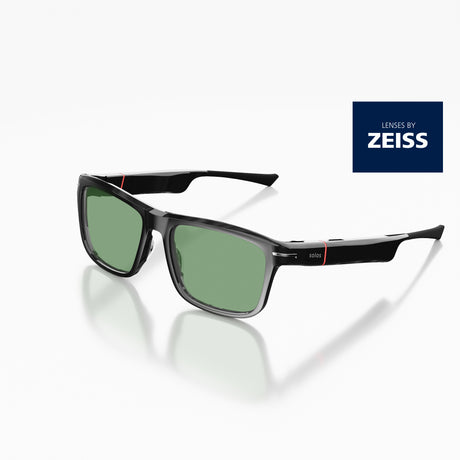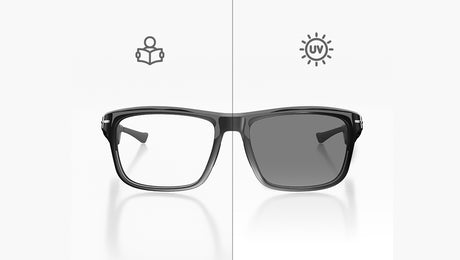To balance life and training, this rider uses SOLOS Smart Glasses to get the most out of each workout.
Just about every night before I go to bed, I imagine that I’ve been racing the Dirty Kanza 200 since 6:00 a.m., I’m exhausted, I’m in a lot of pain, and I’m nowhere near the finish line. And I always have the same thought: What on earth have I gotten myself into, and how am I going to do it?
Like thousands of cyclists across the globe, I entered my name into the lottery for the 2019 Dirty Kanza. This past week I got the good news — I got in. Over the past few months, I’ve had to commit to long days of training, despite not knowing if I was in or out.
I am hardly an elite athlete. I’m your everyday mid-pack, Cat. 4, 40+ racer with a family (wife, little kids, and puppy), a job, lower back pain, and limited time to ride and train. Although I currently live in Boulder, Colorado, I’m not one of those super-fit Boulderites. My growing list of cycling accomplishments includes competing in the Leadville Trail 100, the Crusher in the Tushar, and plenty of cyclocross races, however, I’ve never come close to the podium at any of these races. And I’ve never ridden (let alone raced) my bike for 200 miles.
For riders like me, racing the Dirty Kanza is a race against ourselves. We want to see what we are capable of, and we want to see how our bodies stand up against a brutally challenging course. I expect it to be one of the best — and worst — things I’ve ever done.
Step one was figuring out how to balance family and work life with around 8 to 14 hours per week of riding time. My work day is flexible, so I crafted a schedule where I do the bulk of my training during the week, with only one relatively short ride on the weekends. I’ve often had to ride at night to accommodate this schedule, which is good practice because I expect to be riding well into the night in Kansas. I’ve also given up skiing this winter, instead opting to train on my fat bike up at the slopes while my kids are in ski school. It’s a schedule that, thus far, has worked for my family.
The next step was to determine the specifics of my training. I train with a power meter and knew I wanted to work with a coach. I had several criteria in mind when choosing a coach. I wanted someone with Dirty Kanza experience and someone who I liked personally. An added bonus would be a coach that was local, and would, therefore, have a sense of the local terrain and weather conditions when planning/adjusting my training. Thus, I chose (former VeloNews staffers) Kristen and Nick Legan, who now operate a coaching company called Rambleur Rising.
Kristen creates individualized structured workouts for me and uploads them to my TrainingPeaks account for me to follow. These workouts include intervals at specific ranges (or zones) of intensity, which are measured by my power meter. Once I’ve completed each ride, it is uploaded from my GPS device to TrainingPeaks for Kristen to review, give feedback, and make adjustments if needed.
Because of my full life schedule, I need to be as efficient as possible with my training time. I don’t have time to waste. One cool piece of equipment I’ve recently incorporated into my training is a pair of SOLOS Smart Glasses. SOLOS was kind enough to lend me a pair to try out. One great feature of the glasses is the heads-up display of my data, including power. I no longer have to look down at my bike computer to see if I’m “in the zone,” which is obviously a safety benefit.
Moreover, the glasses also display the structured workout details from my TrainingPeaks account. I used to put my workouts on a post-it note on my stem. Those days are gone. I just press start, and the glasses visually and audibly guide me through each step, and allow me to monitor in real time how well I’m hitting the prescribed power zones (for example, if my power is too high or too low, the power is displayed in red, but when I’m “in the zone” it’s displayed in green). This really helps me get the most out of each workout.
The first time I put the SOLOS glasses to the test was back in November, when my training plan called for a three-plus hour ride with intervals: one 30-minute interval at low zone three (180-192 watts); two 15-minute intervals at high zone three (192-216 watts); and three five-minute intervals at zone 4 (216-252 watts). The winds were angry that day, so in an attempt to avoid some of it, I headed up Sunshine Canyon here in Boulder.
During the ride, the benefits of the SOLOS glasses were immediately apparent right in front of me (literally). The climb up Sunshine Canyon has no shoulder, plenty of curves, as well as significant motor vehicle traffic. Being able to concentrate on what was in front of me, including my ride data, and not having to look down at notes or a computer, felt safer. And, with the data always in my field of view, I really nailed the planned intervals (even that first one, where I had to thread the needle of a 12-watt window).
Although my training has been going well, I still often feel like Willie Mays Hays (played by Wesley Snipes) in the movie “Major League,” like I’m going to be carried out of the spring training dorms (or, in this case, the dorms of Emporia State University) in the middle of the night because I don’t belong at a race this big. Stay tuned!
Source: VELONEWS

































